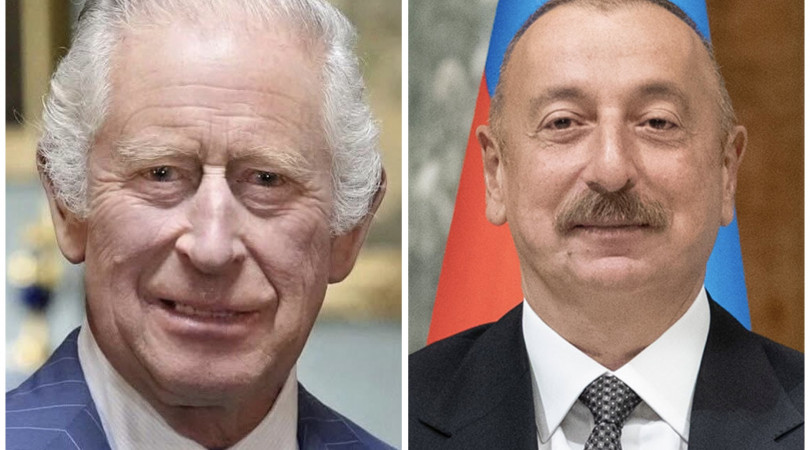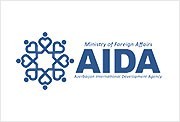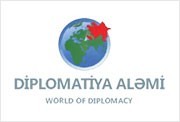REVIEW BY CENTER OF ANALYSIS OF INTERNATIONAL RELATIONS (AIR CENTER-THINK TANK BASED IN BAKU, AZERBAIJAN) OF THE DOCUMENTARY FILM “PARTS OF A CIRCLE: HISTORY OF THE KARABAKH CONFLICT”
On 12 May 2020, Conciliation Resources released a 76-minute documentary Parts of a Circle: History of the Karabakh Conflict that addresses Armenia-Azerbaijan conflict 26 years after the ceasefire. The filmmakers claim their presentation of the history of the conflict is balanced and neutral. We believe that there are number of inaccuracies and omissions in the documentary that distort the true nature of the conflict, which we would like to highlight in our critical review divided into two parts: general and specific comments.
The societies of the two countries, Armenia and Azerbaijan, that fought bloody war in the 1990s, have been exhausted by the endless disputes, myth creation, mutual hatred, idealization of historical events, repetition of the conflicting narratives and blame game since the fragile ceasefire of 1994 was reached. All these animosities further aggravated and complicated the deadlock and radicalized the two societies. Since then some international observers and experts came in, claiming that they would/might be more neutral and free of prejudices, could help these societies to find the common denominators and mutual empathies, which will in the end help to reconcile the two societies. Some might think of these attempts as naive, but at the same time noble, benevolent and compassionate desires that can prevent further bloodshed and escalation. However, we see similar projects as intentional or unintentional attempts to conceal the existing efforts towards cementing of the current status quo and legitimacy of the occupation regime. So far, these attempts have been unsuccessful. The documentary Parts of a Circle: History of the Karabakh Conflict by Conciliation Resources will be one of those attempts.
General criticism
First of all, the problem is not just that the film is dominated by the narratives of one side, it is also the fact that in some parts of the documentary facts are completely distorted or could not depict the objective history of the conflict. The problem is that throughout the film there is mere ignorance of the fact that irrespective of Azerbaijani and Armenian narratives and assertions related to the history of the conflict, they cannot overshadow the very basic norms and principles of the international law that stand at the very core of the current world order. These principles, particularly those related to the respect for sovereignty and territorial integrity of states must define and condition any possible formulas for the resolution of the conflict. The worse problem therefore is self-delusion that there exists some sort of a balance and point of equilibrium or neutrality that if maintained, could help to resolve the conflict. One seems to remain oblivious to the fact that this conscious leaning to academic approach and balance creates more space for and emboldens the narratives of the aggressor. The movie claiming to find that balance put the conflicting sides on the same level, capitalizing only on their grief without, however, distinguishing between the aggressor/invader and the victim. Such an approach could inadvertently lead to the fallacies and the following questions derive from the context: Firstly, should we always equalize conflicting sides in all conflicts? Secondly, should the narratives of the aggressor and the victim be treated on a par with with-other? Thirdly, should all countries that are dissatisfied about current status, territories, boundaries, real or self-inflicted traumas, imagined and subjective past start to pursue their imaginations and revisionism in their policies?
The obvious and logical answer to these questions is that balanced and neutral manner is not always right and just approach to conflict resolution. In Armenia-Azerbaijan conflict, the picture is pretty clear: there is the aggressor country, and the country whose territories are occupied and around million people who became refugees and IDPs. There are the victim and the one, which violated international law. In a court, a judge does not pardon and release a criminal for serious offences just because of latter’s traumatic and pitiful past that we might think had set him/her into a wrong path. Of course, the lawyer of a perpetuator will do his/her best to bring up all nuances of the case, masterfully inject the narrative of the defendant into consideration and retell the story in as much convincing version as possible in an attempt to justify the defendant. However, in the end, the judge must be guided by laws, rules, and evidences, thus making a judgement which sometimes might appear unjust to some. A judge cannot act differently, because laws are designed for general cases, not for special circumstances. Similarly, in international law, whatever historical assertions and narratives might be, such territorial conflicts should be resolved according to the existing universal legal principles and norms. Any attempt to maintain a balance between an aggressor and a victim is abysmal and threatens the very linchpin of the modern international system of states. Therefore, intentionally or unintentionally, the filmmakers of the documentary of Parts of a Circle: History of the Karabakh Conflict by trying to keep the equilibrium between the parties inject the invader’s narrative into the movie in order to justify the separation of Nagorno-Karabakh region from Azerbaijan and the occupation of the surrounding districts.
The movie, made as the chronicle of the conflict, omits the most important factor, which would help uninformed audience to understand the root cause of the conflict - the nationalist idea of Great Armenia that stands at the root cause of the conflict.
The above observations enable us to assert that this incoherent approach of the filmmakers to the history of the conflict will and might not contribute to the conflict resolution. Neither will it help those who wants to understand the conflict.
The specific criticism
Above we criticized the balanced and neutral attempt of the filmmakers to the history of the conflict and explained why this approach cannot contribute to the resolution of the conflict. At the same time, we believe that the filmmakers actually could not even maintain the balance that they claimed. Incorporation of some cadres on Khojaly massacre and Azerbaijani IDPs do not make it balanced and neutral.
The prejudice in the film starts from the first scenes when it makes introduction with how local Armenians in Nagorno-Karabakh Oblast of Soviet Azerbaijan could not watch the football match between Ararat from Armenian and Dinamo from Kiev on October 1973, presenting it as a sign of oppression. The filmmakers did not dwell on official statistics, salaries, income and etc. that might have given a clue to the onlookers about how bad or good Armenians in Nagorno-Karabakh lived in comparison to people in the other parts of Azerbaijan or in Armenia. Such a review could also contain references to the rights and freedoms of local Armenian population, by giving actual footages on whether their rights were really violated, what cultural and other rights they enjoyed by law, and the degree of their representation in local and central administrative government institutions. These are very important questions that might have lead the film to completely another start and trajectory.
Throughout the film there is very bold tendency to casually mention and cover up very important historical events that Armenian nationalists do not like to speak about ,which, however, cannot be ignored and left out. It seems like the producers of the film had to mention them unwillingly and reluctantly to prevent criticism, while at the same, pushing more narratives of Armenian side. One of those important facts that was only slightly mentioned is how and why before the events in Sumgait Azerbaijanis from Armenia were massively deported, as if it was something casual. The plight and pain of the thousands of those people was just purposefully omitted. At the same time, the producers talked a lot about controversial later events in Sumgait. With this respect, the most unpleasant moment is that the producers connect the Black January events - 20 January 1990 massacre by the Soviet troops to “pogroms” of Armenians in Baku. This fact is an utter disrespect to the souls of hundreds of ordinary, but freedom-loving Azerbaijanis who were slain at the hand of the Soviet soldiers to crush their fight for freedom and independence. Unfortunately, the creators of the movie fell into the trap of repeating the Soviet and Armenian narratives of the bloody Black January events in Baku.
With the exception of Kalbajar's occupation, the producers presented the occupation of other districts outside of the Nagorno-Karabakh region - Lachin, Gubatly, Zengilan, Jabrayil, Fuzuli and Aghdam - just as "another 5 districts" without highlighting any human tragedy intentionally. The occupation of these districts is mentioned in less than few minutes, thus diminishing the magnitude of the material and emotional damage inflicted on Azerbaijani side. The film also casually mentions the UN Security Council resolutions 822, 853, 874, 884 as if all of them were the same and adopted on the same date. Moreover, it is even more disappointing to see the strategic justification of occupation of these territories from Armenian perspective, as if the occupation of Azerbaijani territories should be treated as a normal state of things.
While presenting Khojaly, the movie contains an interview from Vitaly Balasanyan who was one of the main perpetrators for the mass murder of civilians. They however, somehow forget to mention the famous interview of Serj Sarkisian to Thomas de Wall where he confessed that “before Khojalu, the Azerbaijanis thought that they were joking with us, they thought that the Armenians were people who could not raise their hand against the civilian population. We needed to put a stop to all that. And that’s what happened.” The producers also forget to mention the memoirs of Markar Melkonian, brother of famous Armenian volunteer commander Monte Melkonian who was considered a terrorist by Americans, who also confirmed the deliberate assault on the civilian population. At the same time, there are no adequate interviews with the survivors of Khojaly genocide.
The producers also forget to include Azerbaijanis from different parts of Nagorno- Karabakh, Shusha, Khankendi, Khodjavend, Aghdere and etc. In the film Rey Karimov who speaks on behalf of IDPs actually is not from Nagorno-Karabakh, but from Aghdam which is also occupied. The film also did not invite the official representatives of Azerbaijani community of Nagorno-Karabakh region, those once who lived with Armenians together and those who are supposed to determine the common future of the region with their Armenian cohabitants. As one IDP from Shusha said commenting this film: “I did not find any 'Shushali' (I mean Azerbaijani from Shusha) face in the film. I find it really awkward why the producers, those involved from the Azerbaijani side, did not find any single Azerbaijani from Shusha to interview for the film”.
There are other shortcomings, for example, the film does not say also anything about the series of terrorist attacks against civilians in different parts of Azerbaijan in the very early 1990s that were well investigated.
While the movie thoroughly discusses the Operation Ring by the Soviet law-enforcement agencies in the Nagorno-Karabakh region during 1991, it fails to discuss the process of arming of the Armenian militias in the region and their terror against the Azerbaijani population.
Conclusion
The movie Parts of a Circle: History of the Karabakh Conflict, looks like a “fair” attempt to cover both sides of the story of the Armenia-Azerbaijan conflict. However, under disguise of 50/50 narrative it omits the most important elements of the conflict – root causes of Armenian expansionism and legal framework of the conflict.
In this documentary occupying power and the victim of occupation was treated equally. Unless the international community and experts revise their deeply flawed attitude towards this and some other ethno-territorial conflicts and continue to seek “neutrality” in place where the principled stance should prevail, peace will be very hard to achieve. One should not yield into the attempts to diminish the importance of states’ sovereignty, territorial integrity and inviolability of internationally recognized borders. As also highlighted above, falling into this trap could shatter the foundations of international law and value system.
It is therefore regrettable that despite all possible the positive intentions that might have led to the creation of this documentary, very quickly it strayed from the “balance” that it initially claimed to have, and central thread of final product unfortunately ended up neglecting the basic tenets of international law and mostly indulged the narrative of the conflict touted by the Republic of Armenia.
Center of Analysis of International Relations (AIR Center)
Mirza İbrahimov 8, Baku, AZ1100, Azerbaijan, Phone: (+994 12) 596-82-39, (+994 12) 596-82-41, E-mail: info@aircenter.az

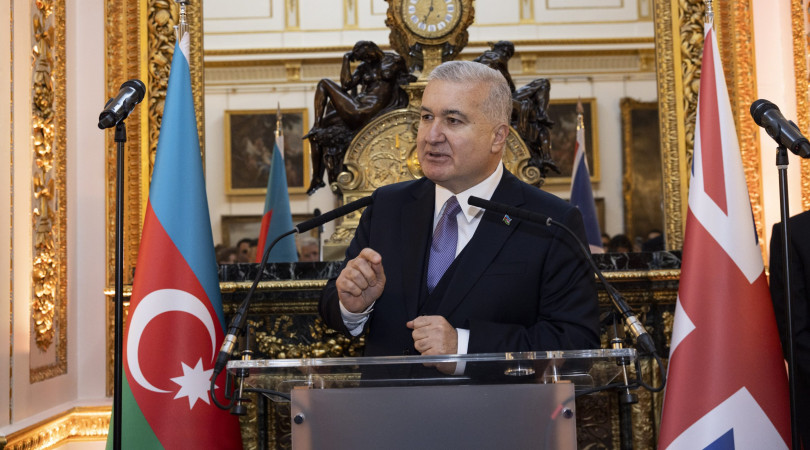
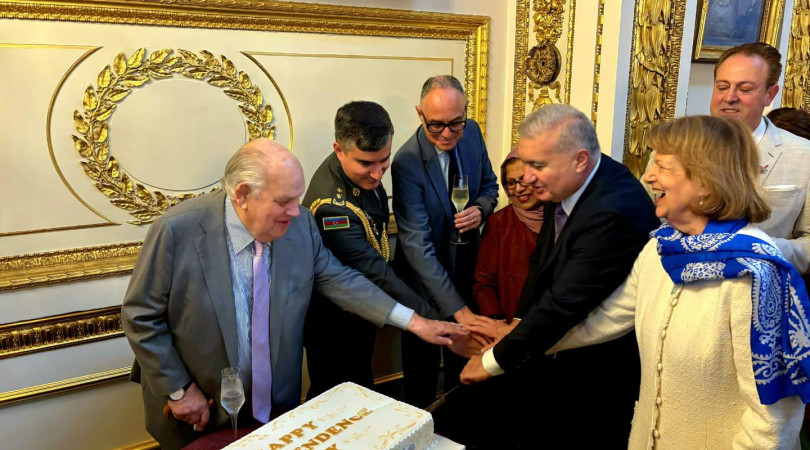

.jpg)
